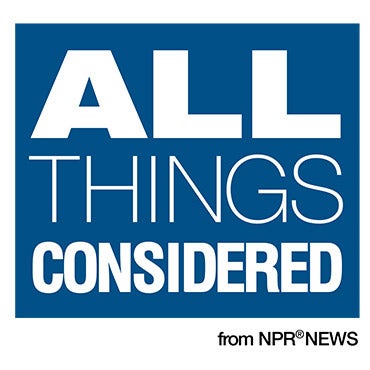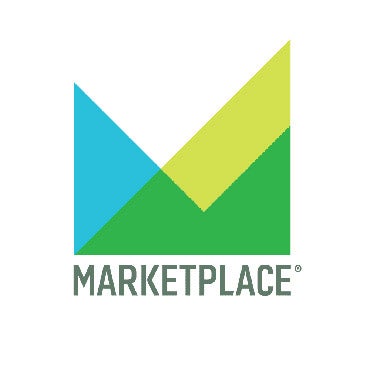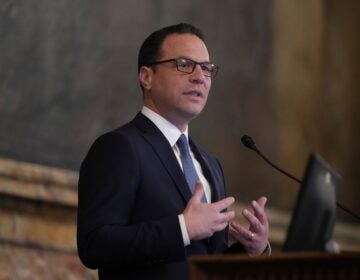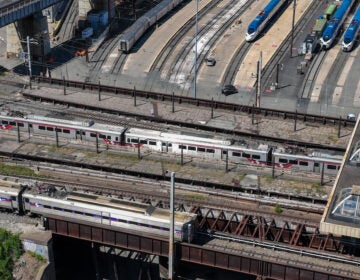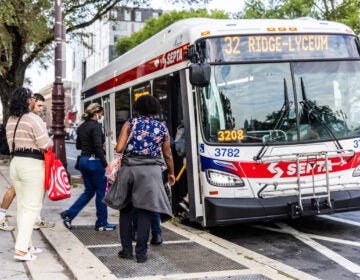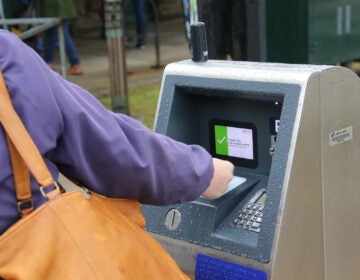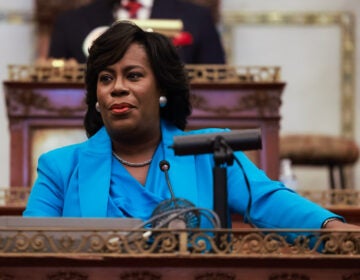Zero Fare has been a success, but some vulnerable Philly residents aren’t feeling the benefits of the free transit program
Residents in need are selected at random to get free rides on SEPTA. Some advocates say those with the greatest need should get priority.
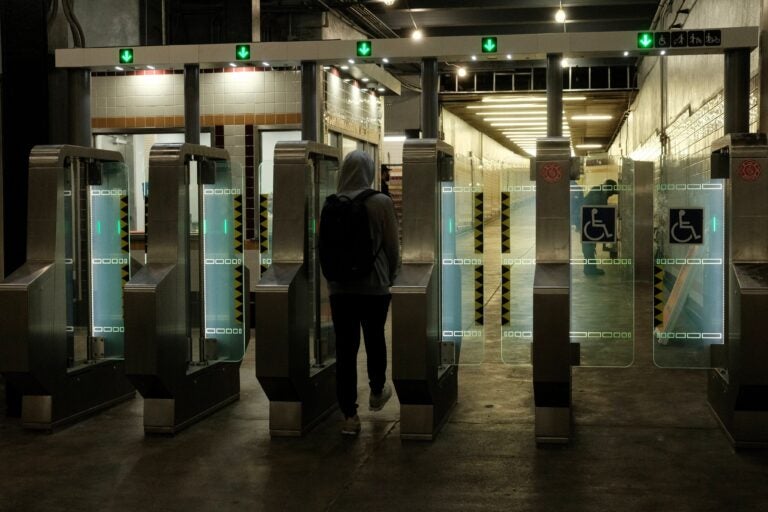
An example of the full-length fare gates that have been installed around Philadelphia, in an effort to decrease fare evasion. (Ben Bennett/WHYY)
From Philly and the Pa. suburbs to South Jersey and Delaware, what would you like WHYY News to cover? Let us know!
David Behney didn’t pay when he took the bus to City Hall on Thursday morning. The shelter he currently stays at, One Day at a Time, is almost 3 miles from the municipal building, and even if there weren’t a strong wind blowing, the 41-year-old says walking wasn’t an option.
Five years ago, Behney was biking to work when he became the victim of a hit-and-run on Pine Street and has been homeless since. Like many in Philadelphia, public transportation is a necessity to get to doctor appointments, work and job interviews. Behney said that as a person experiencing homelessness, money is perpetually tight and that he doesn’t always have a way to pay for SEPTA.
Then he discovered the Zero Fare pilot program.
“I was like, this sounds really awesome because somebody at my shelter had gotten a card,” Behney said. “It was free rides for two whole years, a life-changing type of thing.”
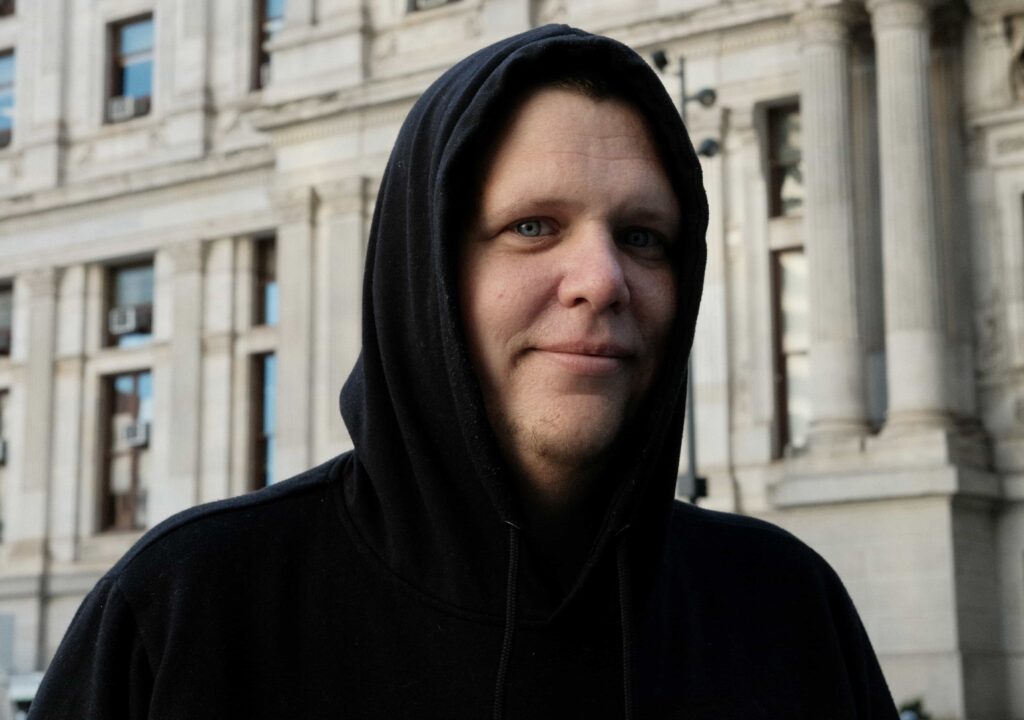
The city of Philadelphia implemented Zero Fare in August 2023 as a two-year pilot providing free public transportation to low-income residents. So far, the program has enrolled 34,000 low-income riders and subsidized 6.2 million trips.
However, Behney did not account for any of those rides.
Who is using Zero Fare?
While Zero Fare has been a success, Behney wonders why vulnerable residents like him weren’t prioritized. And with the outlook of the program in question, it might not be possible for the city to make changes in the future.
Over the course of the past two years, Philadelphia’s free-ride program has boasted a 63% participation rate, significantly higher than similar programs in Portland, Oregon, and New York City.
Participants are selected by a lottery, automatically enrolled if their income is below 150% of the federal poverty level. In 2023, Philadelphia’s poverty rate was 20.3%, meaning at the program’s onset, over 300,000 residents were eligible. But with limited funding, the city could only give out 25,000 free-ride cards. That means low-income residents had a 1-in-12 (or 8%) shot at free public transit.
“Your chances of actually getting a Zero Fare card are almost as good as winning the Powerball,” Behney said.
The program’s singular qualification of low income is Behney’s biggest critique. A resident making $20,000 has the same odds of getting a card as someone living in severe poverty. He said there should be a sort of “vetting system” to determine who needs the rides the most, not only taking into account one’s income, but one’s living situation, expenses and why they think they deserve the free transit card.
Even so, Behney’s idea for this screening system is at odds with how the program was set up. Nicola Mammes, program director of Zero Fare, explained the reasoning for Philadelphia’s implementation of automatic enrollment and the low bar for entry into the program.
“The population that is eligible for this benefit — they oftentimes are hard to reach,” Mammes said in an interview with Next City. “And really, that’s also why we designed the program the way that we did — that it would be on us to figure out how to reach them.”
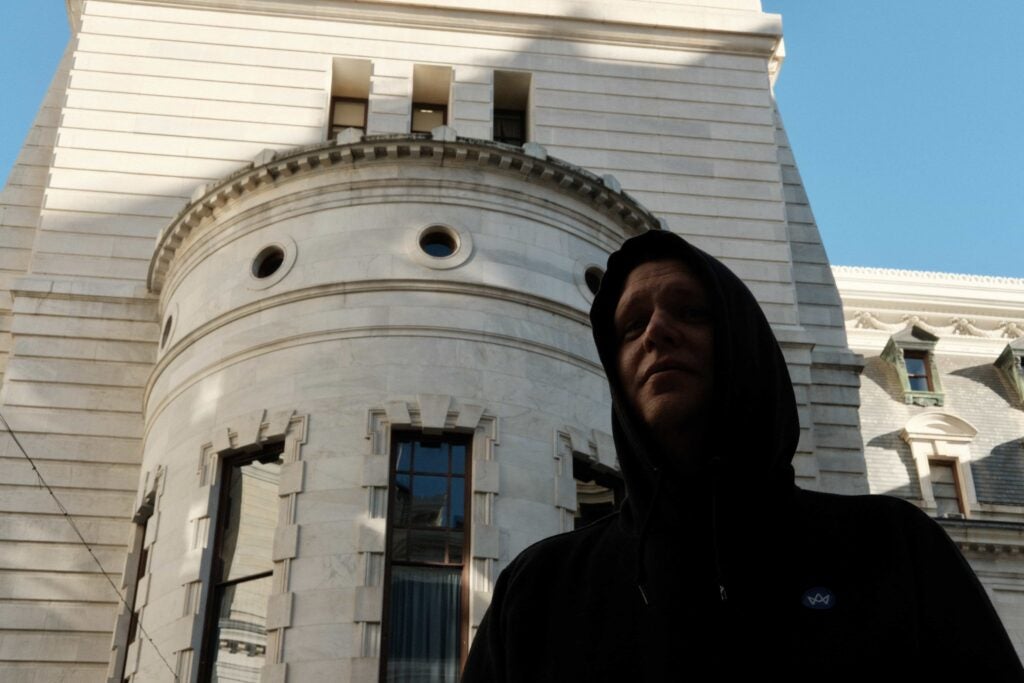
Having a more in-depth selection process could hinder the program’s reach and ability to give out as many cards as it can. If people had to opt in, fill out criteria and then be selected, not only could it take more time, but residents who would benefit may never sign up.
A portion of enrollments were done through community-based organizations, accounting for 10% of all participants. In the future, a similar system could be implemented where a small percentage of cards could be set aside for a vetting program, like Behney suggested, or specifically for lower-income residents, with the majority of passes still being randomized.
Whether or not changes like this can be implemented will rely on the program securing permanent funding — a question that is still unanswered at this time.
An uncertain path forward
Once funding runs out for the Zero Fare pilot, there is uncertainty about if it will continue. Mayor Cherelle Parker’s initial 2026 fiscal budget did not include funding to keep operating the program. After facing backlash, the city announced in April that there is ongoing talk of extending the program through the 2026 fiscal year.
While the city figures out a path forward, advocates are not giving up on the fare-free rides. Earlier this month, Councilmember Nicolas O’Rourke introduced a transit access proposal that would permanently establish a funding line for Zero Fare in the city charter, with Philadelphia contributing about $30 million to the program’s general fund annually.
Without permanent funding, the program stands to be perpetually at risk of being shut down.
Prohibitive transit costs
Behney said has $24 in his bank account. To get to his part-time job at Xfinity Mobile Arena, he takes the 54 bus to the Broad Street Line. After recent fare increases, a round-trip journey is almost $12.
The walk from the shelter to the South Philadelphia Sports Complex is just over 7 miles, and with a slowed gait following his biking accident, Behney estimates walking would take him five or six hours.
Without access to Zero Fare, Behney usually can’t afford to pay for a ride. And earlier this year, SEPTA began clamping down on fare evasion, issuing $300 tickets for hopping turnstiles or not paying on buses.
“Ticketing people for $300 for a $2.50 fare is outrageous and not feasible for somebody that is below the poverty line,” said Sarah Laurel, executive director of Savage Sisters, a nonprofit housing and addiction support group in North Philadelphia.
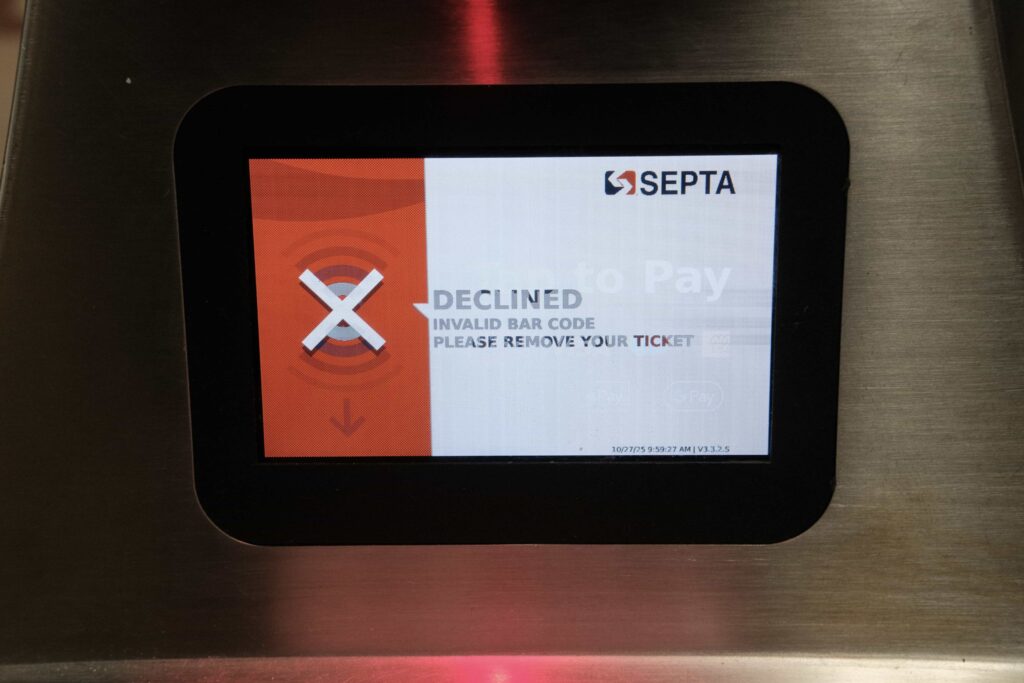
Laurel said multiple individuals who entered Savage Sisters’ housing program have been subjected to these fines, even leading to warrants. Court orders can create ongoing problems for those experiencing homelessness. And the tickets are some of the most expensive in the country — in Boston and New York City, fines are $50 and $100, respectively.
When SEPTA announced it was expanding its pilot program to counter fare evasion, the transit agency said it loses at least $30 million annually to riders not paying for tickets. In addition to raising ticket prices, full-length fare gates have been installed at SEPTA stations around the city.
These efforts have led to a reduction in fare evasion overall, with the first installed fare gates reducing the crime by 20% at the 69th Street Transportation Center, according to a SEPTA crime report.
Though the increased vigilance to dissuade potential fare evaders has shown effectiveness, Laurel thinks these efforts are “problematic” and harmful to a vulnerable population in the city.
“Our friends are going to work, they’re going to doctor’s appointments, and they just simply do not have the financial means to use the train,” Laurel said. “Now it’s kind of an act of microaggression by SEPTA to put up these large barriers in an already difficult-to-access public transportation system for the impoverished of the city.”
Still, Behney continued to voice his concerns as he sat outside City Hall, hoping to speak about Zero Fare at the weekly hearing.
“I am the picture of the people that they designed this program for, and I don’t have a card,” Behney said. “It seems unfair.”

Get daily updates from WHYY News!
WHYY is your source for fact-based, in-depth journalism and information. As a nonprofit organization, we rely on financial support from readers like you. Please give today.
